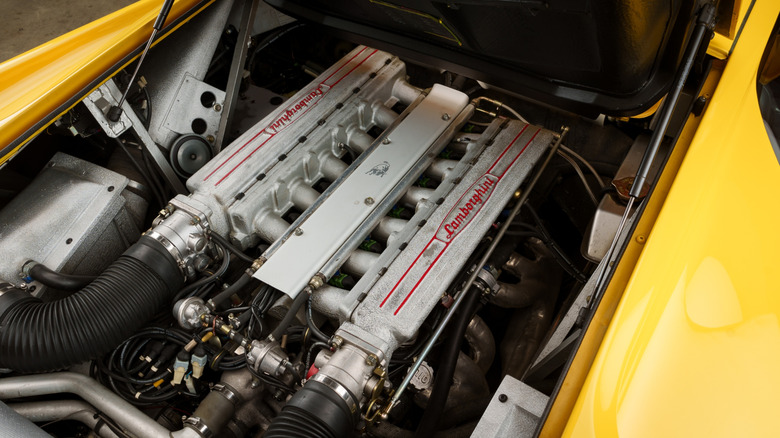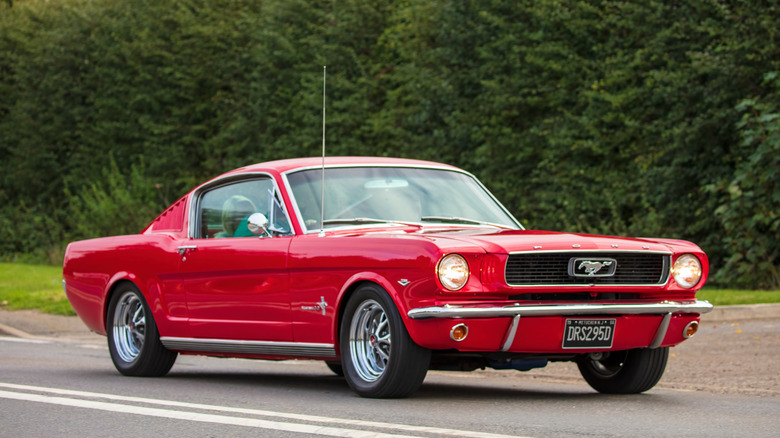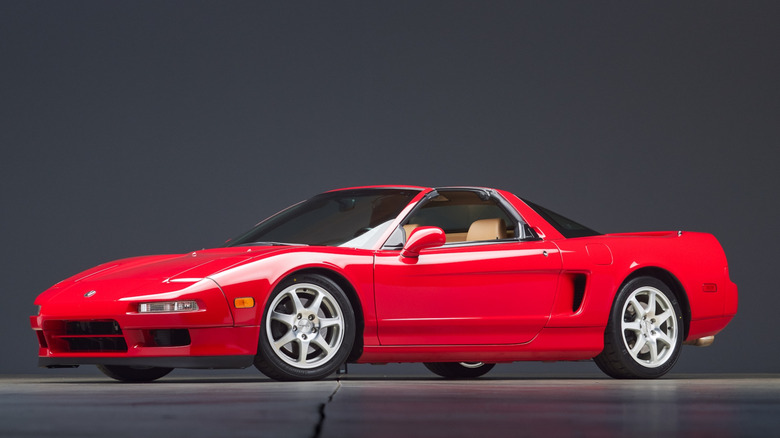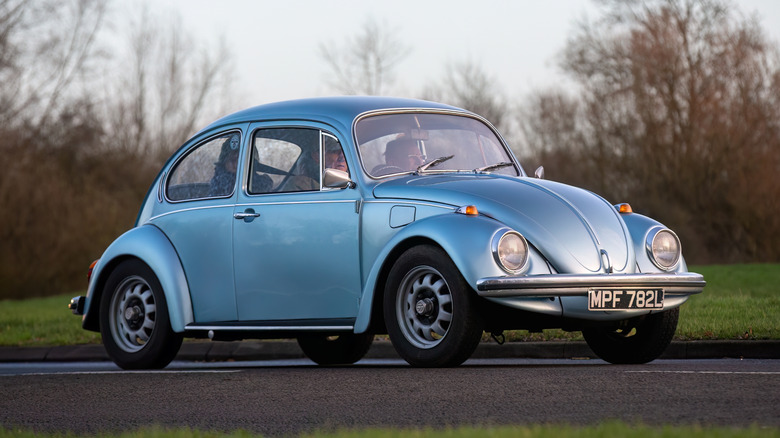Front Vs. Mid Vs. Rear Engines Explained: How Placement Affects A Car
One of the very first elements any automotive designer must consider is where to locate the engine. Whether it's a typical internal-combustion powerplant or electric motors, engines require a lot of space, they're heavy, and different types have different needs. For instance, if your engine is in the middle of the car, how do you supply it with fresh air? If your engine is rear-mounted, how do you keep a radiator cool? What about weight distribution? Engines can be massive chunks of metal, easily weighing multiple hundreds of pounds on their own. This can drastically affect a car's balance and weight bias.
Questions like these often dictate a huge number of decisions during some of the earliest parts of a car's design phase. Because the engine has a very specific set of requirements, where it's placed often influences the shape and purpose of the entire vehicle. Most cars typically follow a "template" for each configuration – front-engine vehicles are by far the most common and easiest to construct. Mid-engine cars are usually sports-oriented and more specialized in their roles. And rear-engine cars are similarly rare and more niche.
Of course, there are exceptions to each of these rules. The first-generation Toyota Previa, for example, is the only mass-produced mid-engine minivan. And while rear-engine vehicles are uncommon in general, the Volkswagen Beetle – the longest-lived name in automotive history – is rear-engine. So, outside of weight distribution and balance, what other factors determine an engine's placement? Let's look at some of the advantages and disadvantages of each.
Front-engine: the configuration of the masses
Front-engine layouts remain the perennial option for a wide variety of reasons, chief among them being simplicity. Engines require three elements to create combustion: fuel, air, and spark. Air is most readily available at the front of the vehicle, so manufacturers don't have to design around airflow with front-engines. If the engine requires more air, a bigger front grille will do. Similarly, this means the vehicle's engine and cooling system can live in the same bay without issues. The only real downside is that on rear-drive and AWD vehicles, you have a long driveshaft running through the passenger compartment, eating up some cabin space.
Typically, manufacturers also favor this configuration because of the forward-biased weight distribution. This has to do with understeer versus oversteer. In basic terms, understeer means that a car turns less than what your steering input asks of it, oversteer is the opposite. Oversteer leads to a car feeling snappy and unpredictable, with out-of-control spins being harder to correct. A more understeery car, on the other hand, is regarded as the "safer" alternative, with many passenger cars tuned from the factory to favor understeering.
For instance, let's say you panic-brake and veer hard, but your car keeps going in a straight line for a fraction of a second. It's far easier to recover control in such a situation than if you similarly jerk the wheel and your car's rear end breaks traction, causing a spin. Likewise, overcorrections are easier to catch, especially in front-wheel drive cars where "fishtailing" is far less likely. Almost all larger vehicles are front-engine to provide better cargo room, especially pickup trucks. In fact, there's exactly one mass-produced pickup which isn't: the classic Volkswagen Transporter.
Mid-engine: a sportier alternative
There are two ways to execute a mid-engine car: front-mid and rear-mid. The true definition of a vehicle which is mid-engine is that the engine block does not sit over an axle. Therefore, a car like a modern Porsche 911 is considered mid-engine, whereas older 911s, which have the engine sat behind the rear wheels, are rear-engine. Alternatively, any vehicle with a front-mid engine configuration has the engine behind the front axle, but ahead of the vehicle's centerline. It has nothing to do with where the driver sits (the Toyota Previa's engine is below the driver but ahead of the centerline, so it is front-mid engine).
Many well-known front-engine vehicles are actually front-mid engine, such as most Corvettes (excluding first and eighth-gen models), the original Willys MB Jeep, Nissan GT-R R35, and Dodge Viper. The main advantages with a mid-engine design lay in a car's weight distribution. A mid-engine car benefits from excellent balanced traction between front and rear wheels. However, the nature of a mid-engine layout requires either a very long chassis or a two-seat design because of space limitations. Hence why the majority of mid-engine cars are two-seaters or 2+2s.
This layout, especially in rear-mid engine cars, also faces cooling issues due to the lack of airflow. That's why many such cars feature prominent vents along the sides and specialized cooling systems, such as the Ferrari Testarossa and McLaren F1. Mid-engine cars also benefit from a sleeker front-end design, unencumbered by a tall engine sat over the front axle. Balance being the primary concern with sports-oriented cars, this leads to some creative solutions to create the optimal distribution. For instance, some front-mid cars, like a C5 Corvette, feature a rear-mounted transmission to help with weight distribution.
Rear-engine: a quirky layout of its time
Much like front-engine cars, rear-engine designs feature more compact bodies and spacious interiors. It also affords exceptional rear-end traction because of the weight distribution, perfect for dirt and snow. Because of this, even the classic Volkswagen retains a prominent presence in rallying, being a popular option in SCORE with Class 11 and Class 5 Unlimited both dedicated to the platform. Similarly, two rear-engine AWD Porsche 959s dominated the 1986 Paris-Dakar Rally, taking a 1-2 almost five hours ahead of third place.
Similar to mid-engine, rear-engine cars also suffer from cooling and intake problems. Rear-engine cars also tend to be more unforgiving if they lose control, because the rear end likes to pendulum. Often, this bias also creates more of a learning-curve for driving a rear-engine car at speed, with the lighter front-end sometimes feeling "floaty" because of a lack of weight. Because the transmission is mounted rearward, there still must be a mechanical connection, such as a shaft, running through the passenger cabin for the shifter linkage. However, it remains far less complex than older AWD systems for similar levels of grip in poor weather.
Once popular for their traction, crumple zones, and simplicity, these issues were largely overcome by advancing automotive technology. As such, rear-engine layouts have long-since fell out of mainstream favor. Very few rear-engine cars are produced today, with only specialized, niche holdovers such as the Smart Fortwo serving as contemporary examples.



